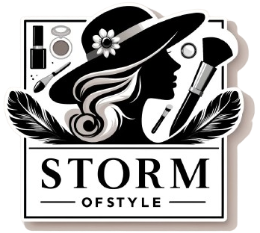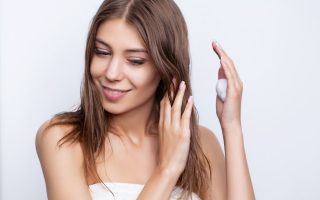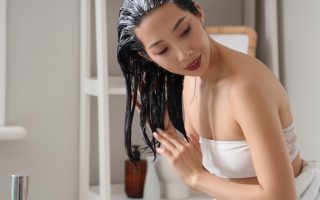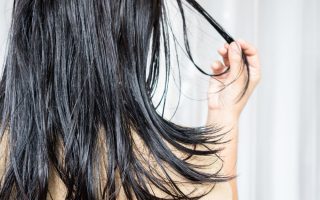If you’ve ever felt like your scalp needs a little extra care, you’re not alone. Scalp scrubs are gaining popularity as a way to give your scalp the attention it deserves. They help remove dead skin cells, product buildup, and excess oil, leaving your scalp feeling refreshed and rejuvenated. This comprehensive guide will explore the benefits of scalp scrubs, how to use them, and tips for choosing the right one for your needs.
Why Scalp Scrubs?
The Basics of Scalp Health
A healthy scalp is the foundation for healthy hair. When your scalp is clean and well-maintained, it creates an optimal environment for hair growth. Dr. Gretchen Frieling, a board-certified dermatopathologist, emphasizes, “Scalp scrubs are a great way to remove dead skin cells and product buildup that can clog pores and hinder hair growth. This simple addition to your routine can leave your scalp feeling refreshed and rejuvenated” (Source: Real Simple).
Benefits of Scalp Scrubs
Scalp scrubs offer numerous benefits, including:
- Removing Buildup: Over time, hair products can leave residue on your scalp, leading to clogged pores and hindering hair growth. Scalp scrubs help remove this buildup.
- Exfoliating Dead Skin Cells: Just like your skin, your scalp can accumulate dead skin cells. Exfoliating these cells can prevent dandruff and flakiness.
- Stimulating Blood Circulation: Massaging your scalp while scrubbing increases blood flow, promoting healthier hair growth.
- Balancing Oil Production: Regular scalp exfoliation can help balance oil production, preventing an overly oily or dry scalp.
How to Use Scalp Scrubs
Step-by-Step Guide
- Choose the Right Scrub: Not all scalp scrubs are created equal. Look for gentle formulas with natural exfoliants like sugar or salt. Avoid harsh chemicals that can irritate your scalp. Kerry Yates, a trichologist, advises, “If you have sensitive skin, consult a dermatologist before using a scalp scrub” (Source: The Zoe Report).
- Wet Your Hair: Start with wet hair. This helps the scrub spread more easily and prevents it from being too abrasive.
- Apply the Scrub: Take a small amount of scrub and gently massage it into your scalp using circular motions. Focus on areas where you typically experience buildup or dryness.
- Rinse Thoroughly: After scrubbing, rinse your hair thoroughly to remove all traces of the scrub.
- Follow with Shampoo and Conditioner: Use your regular shampoo and conditioner to cleanse your hair and scalp. This will help remove any remaining scrub particles and leave your hair feeling soft and clean.
- Frequency: The frequency of using a scalp scrub depends on your hair type and the condition of your scalp. For oily or dandruff-prone scalps, once a week may be ideal. For normal scalps, once a month might suffice. Ursula Stephen, a celebrity hairstylist, notes, “The frequency of using a hair mask depends on your hair type and the condition of your hair. If your hair is very dry or damaged, you may need to use a mask once or twice a week. For normal or healthy hair, once a month may be sufficient” (Source: InStyle).
Personal Anecdote: My Experience with Scalp Scrubs
I used to struggle with an oily scalp and frequent product buildup. After reading about the benefits of scalp scrubs, I decided to give it a try. I chose a gentle scrub with sugar and tea tree oil. The first time I used it, I noticed an immediate difference. My scalp felt cleaner and less oily, and my hair looked shinier. Now, I incorporate a scalp scrub into my routine once a week, and my hair has never been healthier.
Choosing the Right Scalp Scrub
Ingredients to Look For
When selecting a scalp scrub, consider the following ingredients:
- Natural Exfoliants: Sugar, salt, and ground nuts are excellent natural exfoliants that gently remove buildup without irritating the scalp.
- Hydrating Agents: Ingredients like aloe vera, coconut oil, and shea butter can help keep your scalp hydrated.
- Soothing Elements: Tea tree oil, peppermint, and chamomile can soothe an irritated scalp and provide a refreshing sensation.
Ingredients to Avoid
Avoid scrubs with harsh chemicals or large, abrasive particles that can damage your scalp. Dr. Sandy Skotnicki, a Toronto-based dermatologist, warns, “Not all scalp scrubs are created equal. Look for gentle formulas with natural exfoliants like sugar or salt, and avoid harsh chemicals that can irritate your scalp” (Source: Beyond Soap).
DIY Scalp Scrubs
If you prefer natural and cost-effective solutions, you can make your own scalp scrub at home. Here’s a simple recipe:
- 2 tablespoons of sugar
- 2 tablespoons of coconut oil
- A few drops of tea tree oil
Mix the ingredients together and gently massage the scrub into your scalp. Rinse thoroughly and follow with your usual shampoo and conditioner.
Scalp Scrubs for Different Hair Types
For Oily Scalps
If you have an oily scalp, look for scrubs with ingredients like tea tree oil or charcoal, which can help balance oil production and remove excess sebum. Helen Reavey, founder of Act+Acre, says, “A healthy scalp is the foundation for healthy hair. Regular scalp exfoliation can help balance oil production, soothe irritation, and create the optimal environment for hair follicles to thrive” (Source: Vogue).
For Dry Scalps
For dry or flaky scalps, opt for scrubs with hydrating and soothing ingredients like aloe vera, coconut oil, and honey. These ingredients will help moisturize your scalp and reduce flakiness.
For Sensitive Scalps
If you have a sensitive scalp, choose a scrub with gentle exfoliants like sugar and avoid any harsh or irritating ingredients. Always do a patch test before applying the scrub to your entire scalp.
Personal Anecdote: Finding the Right Scrub for Me
I have a sensitive scalp, so finding the right scrub was a bit of a challenge. After some trial and error, I discovered a sugar-based scrub with aloe vera that works wonders. It exfoliates without irritation and leaves my scalp feeling refreshed and my hair looking vibrant.
The Science Behind Scalp Scrubs
The Role of Exfoliation in Scalp Health
Exfoliating your scalp removes dead skin cells and product buildup that can clog hair follicles and hinder hair growth. Dr. Gretchen Frieling explains, “Scalp scrubs are a great way to remove dead skin cells and product buildup that can clog pores and hinder hair growth. This simple addition to your routine can leave your scalp feeling refreshed and rejuvenated” (Source: Real Simple).
The Benefits of Scalp Massage
Massaging your scalp while scrubbing increases blood circulation, promoting healthier hair growth. It also helps distribute natural oils, keeping your scalp and hair hydrated.
Unique Studies
- The Trichological Benefits of Scalp Exfoliation: A Systematic Review: This study analyzed existing research on the benefits of scalp exfoliation, concluding that it can improve scalp health by removing dead skin cells and product buildup, potentially leading to increased hair growth and a reduction in dandruff and other scalp conditions (Journal of Clinical and Aesthetic Dermatology, 2021).
- The Impact of Scalp Microbiome on Hair Health and Disease: This study examined the relationship between the scalp microbiome and hair health. It suggests that a balanced scalp microbiome is crucial for healthy hair growth, and that scalp exfoliation may help maintain this balance by removing excess oil and debris that can disrupt the microbial ecosystem (International Journal of Molecular Sciences, 2021).
Incorporating Scalp Scrubs into Your Routine
Tips for a Consistent Routine
- Set a Schedule: Determine how often you need to use a scalp scrub based on your hair type and condition. Stick to this schedule for the best results.
- Combine with Other Hair Care Practices: Use scalp scrubs alongside your regular shampoo and conditioner routine. Consider adding a deep conditioning treatment once a month for extra hydration.
- Listen to Your Scalp: Pay attention to how your scalp feels after using a scrub. If you notice any irritation or dryness, adjust the frequency or switch to a gentler formula.
Personal Anecdote: My Routine
I’ve found that using a scalp scrub once a week works best for me. I apply the scrub before shampooing, giving my scalp a good massage to boost circulation. After rinsing, I follow with a hydrating conditioner. This routine has made a noticeable difference in the health and appearance of my hair.
Conclusion
Scalp scrubs are a valuable addition to any hair care routine. By removing dead skin cells, product buildup, and excess oil, they help create a healthy environment for hair growth. Whether you have an oily, dry, or sensitive scalp, there’s a scrub out there for you. Remember to choose gentle formulas with natural exfoliants and listen to your scalp’s needs. With regular use, you’ll enjoy a refreshed scalp and healthier, more vibrant hair.
As Dr. Gretchen Frieling says, “Scalp scrubs are a great way to remove dead skin cells and product buildup that can clog pores and hinder hair growth. This simple addition to your routine can leave your scalp feeling refreshed and rejuvenated” (Source: Real Simple). So why not give scalp scrubs a try and see the difference they can make in your hair care routine?




